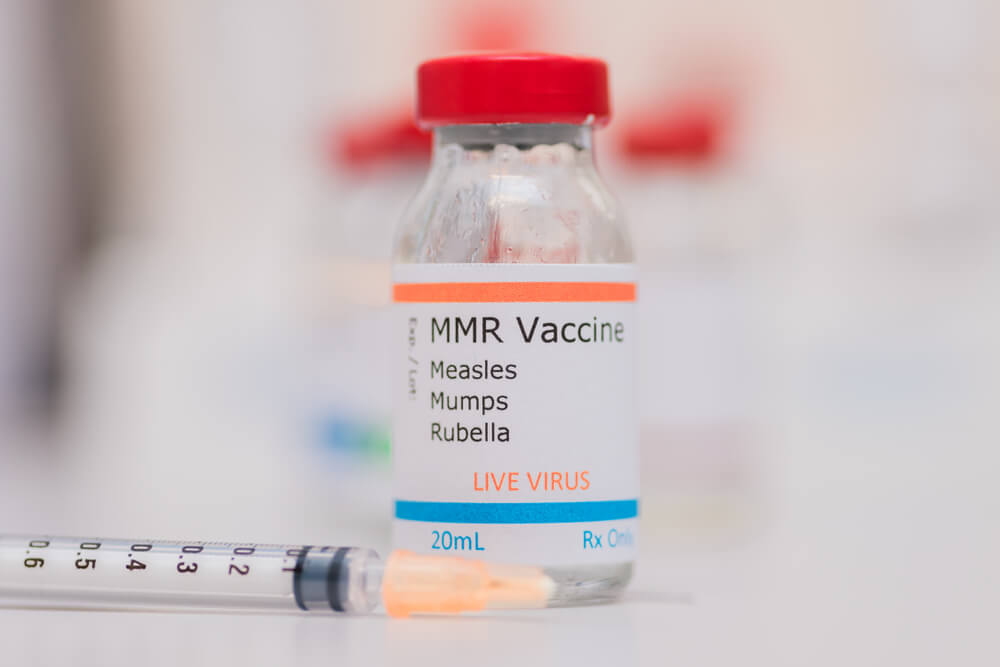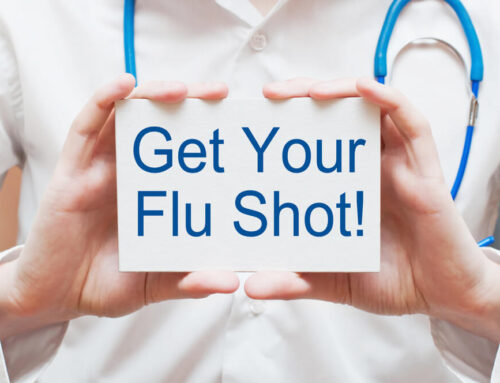The MMR vaccine, that stands for Measles, Mumps, Rubella vaccine, serves a paramount role in the armor of public health, providing valuable protection against the pervasive threats of these diseases. Measles, mumps, and rubella can bear severe health impacts across populations, particularly in the young and immunocompromised individuals.
Each of these illnesses comes with its unique set of complications, ranging from the well-known rash of measles and mumps’ characteristic swelling to the potentially lethal consequences of rubella in pregnant women. To prevent any of the potential complications many argue that immunization shots are the key. At Carreras Medical Centre you can get advice and guidance in regard to immunization of yourself and your family and friends.
The introduction of the MMR vaccine has fundamentally curtailed the incidence and magnitude of these diseases, an achievement that stands as a testament to its effectiveness and reliability. The high coverage rates of the MMR vaccine globally illustrate its remarkable success in reducing and in some areas eradicating, the effects of these diseases.
The widespread acceptance and use of the MMR vaccine, however, should not lead to complacency but instead underline the significance of maintaining and even increasing vaccine coverage as a key initiative for public health.
The concerns and questions raised by some segments of the population, particularly around issues like MMR vaccine side effects or a now-debunked alleged link to autism, highlight the importance of sound, evidence-based information.
As we delve deeper into the topic, it becomes crucial to understand the preventive role the MMR vaccine plays in warding off measles, mumps, and rubella while ensuring the promotion of individual and bolstering communal health.
In-depth Exploration of Each Illness the MMR Vaccine Protects Against
Given the vaccines’ crucial role in the defense of public health, a comprehensive understanding of each disease—the measles, mumps, and rubella—is fundamental. By recognizing their symptoms, the potential complications that may arise, and knowing their incidence rate, we can better appreciate the necessity of the MMR vaccine as a part of a standardized Immunization Schedule.
Detailing Measles: Its Symptoms, Complications, and Worldwide Incidence Rate
Measles’ signature symptom is a high fever succeeded by the eruption of a reddish-brown rash. This highly contagious viral disease can have serious complications, particularly in children. These may include:
- pneumonia,
- seizures,
- brain damage, and
- in severe cases, can be fatal.
Prior to the introduction of the measles immunization, yearly epidemics resulted in approximately 2.6 million deaths worldwide.
Effective vaccination campaigns have led to a more than 99% reduction in measles cases in regions with ongoing measles vaccination services. Despite this, measles remains a leading cause of vaccine-preventable infant mortality. Continuous efforts to increase vaccine coverage and address potential MMR vaccine side effects fears, often related to misconceptions such as the MMR vaccine autism link, are hence crucial.
Discussing Mumps: Its Distinctive Symptoms, Possible Serious Consequences, and Global Statistics
Like measles, mumps is viral and highly contagious. Classic symptoms include fever, muscle aches, fatigue, and most tellingly, swollen salivary glands that cause puffed cheeks. Complications of mumps can be severe, leading to meningitis, loss of hearing, and male sterility.
The mumps vaccine, included in the MMR shot, has been successful in reducing the disease’s global prevalence. Prior to widespread mumps vaccination, the disease was a common illness in children and young adults. Nowadays, thanks to a well-maintained vaccination schedule, cases of mumps are relatively rare. It also stands as proof that childhood vaccinations, including the MMR vaccination from an early age, remain a reliable means to uphold public health.
Examination of Rubella: The Ill Effects on Pregnant Women and Unborn Children, Incidence in Various Parts of the World
Rubella, also known as German Measles, is typically a mild infection. However, if a pregnant woman contracts the disease, it can result in severe consequences, including miscarriages, stillbirths, or babies born with Congenital Rubella Syndrome (CRS). CRS can cause serious, lifelong disabilities such as heart abnormalities, deafness, and cataracts. Existing in the era pre-vaccine, rubella outbreaks often led to a noticeable increase in infant deaths and birth defects.
The rubella vaccine, included in the MMR shot, has brought about a significant decrease in both rubella cases and CRS, especially when administered as part of a systematic immunization schedule.
Delineation of MMR Vaccine’s Development History, Regimen of Administration, and Side Effects If Any
During the mid-20th century, measles, mumps, and rubella each got a separate vaccine. It wasn’t until the 1970s that these vaccines were combined into a single MMR shot. Since its creation, the MMR vaccine has undergone modifications to increase its safety and effectiveness. Cognizance of MMR vaccine ingredients is crucial in catching rare cases of allergic reactions. Each vaccine dose contains live, but weakened strains of Measles, Mumps, Rubella viruses.
The Vaccination Schedule USA recommends administering the first dose between 12-15 months of age and the second between 4-6 years. Most reported side effects are minor like low-grade fever, rash, or mild swelling. Serious vaccine side effects are exceedingly rare, and no valid scientific studies support the claimed MMR Vaccine Autism link, debunked long ago.
The Impact of MMR Vaccination on Public Health Including Statistical Data Revealing Declining Disease Rates.
The persistent application of MMR vaccination has had a profound impact on public health. The World Health Organization reports substantial decreases in disease incidence worldwide following the introduction of the MMR vaccine.
Despite some localized outbreaks, childhood diseases of measles, mumps, and rubella have massively declined due to Children’s Immunization done as part of the Preschool Vaccines Schedule. The MMR vaccine remains a potent tool in the collective effort to further suppress, and ultimately eradicate, these preventable diseases.
Scrutiny of Common Misconceptions and Fears Around MMR Vaccination
Despite the marked success of the MMR vaccine in decreasing the incidence of measles, mumps, and rubella, vaccine hesitancy, influenced by various factors, continues to exist. These inhibitions are primarily fueled by misinformation and misconstrued facts affecting the rates of childhood vaccinations.
Assessing Vaccine-Hesitancy, Its Reasons and Root Cause
Vaccine hesitancy is complex and differs across time, place, and diseases. It’s influenced significantly by misinformation about vaccine safety, effectiveness, and necessity. A misplaced fear of severe vaccine side effects often perpetuates hesitancy. An example is the MMR vaccine autism link that caused quite a stir in the late 90s. However, extensive research has shown that there is no scientific basis for such a connection.
The source of this claim was a study published in 1998, now fully retracted due to serious ethical and scientific misconduct.
Another factor is the lack of awareness or understanding about the diseases these vaccines prevent. The low prevalence rates of measles, mumps, and rubella often lead to underestimation of the diseases’ severity, thus undervaluing the significance of timely immunization in the vaccination schedule USA.
Reinstating the Safety, Efficacy, and Importance of MMR vaccine based on Scientific Research and Evidence
Every MMR shot plays a key role in safeguarding community health. The vaccine undergoes rigorous testing for safety and effectiveness during its development and post-licensure. These stringent quality standards ensure the vaccine’s reliability in preventing measles, mumps, and rubella and keeping their incidence rates low.
Decades of research and countless scientific studies continually demonstrate the safety, efficacy, and immense public health benefit of the MMR vaccine. The World Health Organization and Centers for Disease Control and Prevention, along with numerous other reputable health authorities around the world, support the use of the MMR vaccine as part of the childhood immunization program.
It is essential for maintaining the health of individuals and communities and preventing the resurgence of these debilitating diseases.

Emphasis on the Vital Role MMR Vaccination Plays in Individual Well-Being and Public Health
The MMR vaccine: preventing measles, mumps, and rubella demonstrates a critical role in preserving individual health and fortifying the scaffolding of global public health. By mitigating the risk of these diseases, this single intervention works to protect the most vulnerable in our society including infants, the elderly, and immunocompromised individuals. The continued success of this vaccine is evident through decades of declining disease rates and serves as an unequivocal testament to its ability to secure robust, long-term immunity.
Such triumphs have indeed led to a certain complacency, with fewer people experiencing these diseases first-hand and thereby questioning the need for the immunization. However, it’s crucial to reflect that these are, in fact, preventable diseases, only distanced from us due to the extensive coverage of their respective vaccinations. Any lapses in the uptake of immunization, particularly childhood vaccinations, could potentially expose a window for the return of these illnesses.
Therefore, persistent efforts are vital to broaden vaccine education and counter misinformation to ensure maximum vaccination coverage. This includes reinforcing the debunked MMR vaccine autism link, illuminating vaccine ingredients’ safety and purpose, and addressing genuine concerns regarding vaccine side effects. Such efforts are crucial to maintain the hard-won gains in our battle against these diseases and to stand our ground against the resurgence of preventable diseases like measles, mumps, and rubella.
As we move forward, it becomes further clear that the mission of guarding against these diseases is a shared one. The MMR vaccination, armed with decades of research and overwhelmingly positive impact, forms a cornerstone of this collective effort.
By choosing to vaccinate according to the recommended immunization schedule, every individual contributes to safeguarding societal health, fortifying our collective well-being against the waves of the preventable adverse effects of measles, mumps, and rubella. Call us today and let us give you guidance on how to administer the immunization process for yourself and your close ones.







